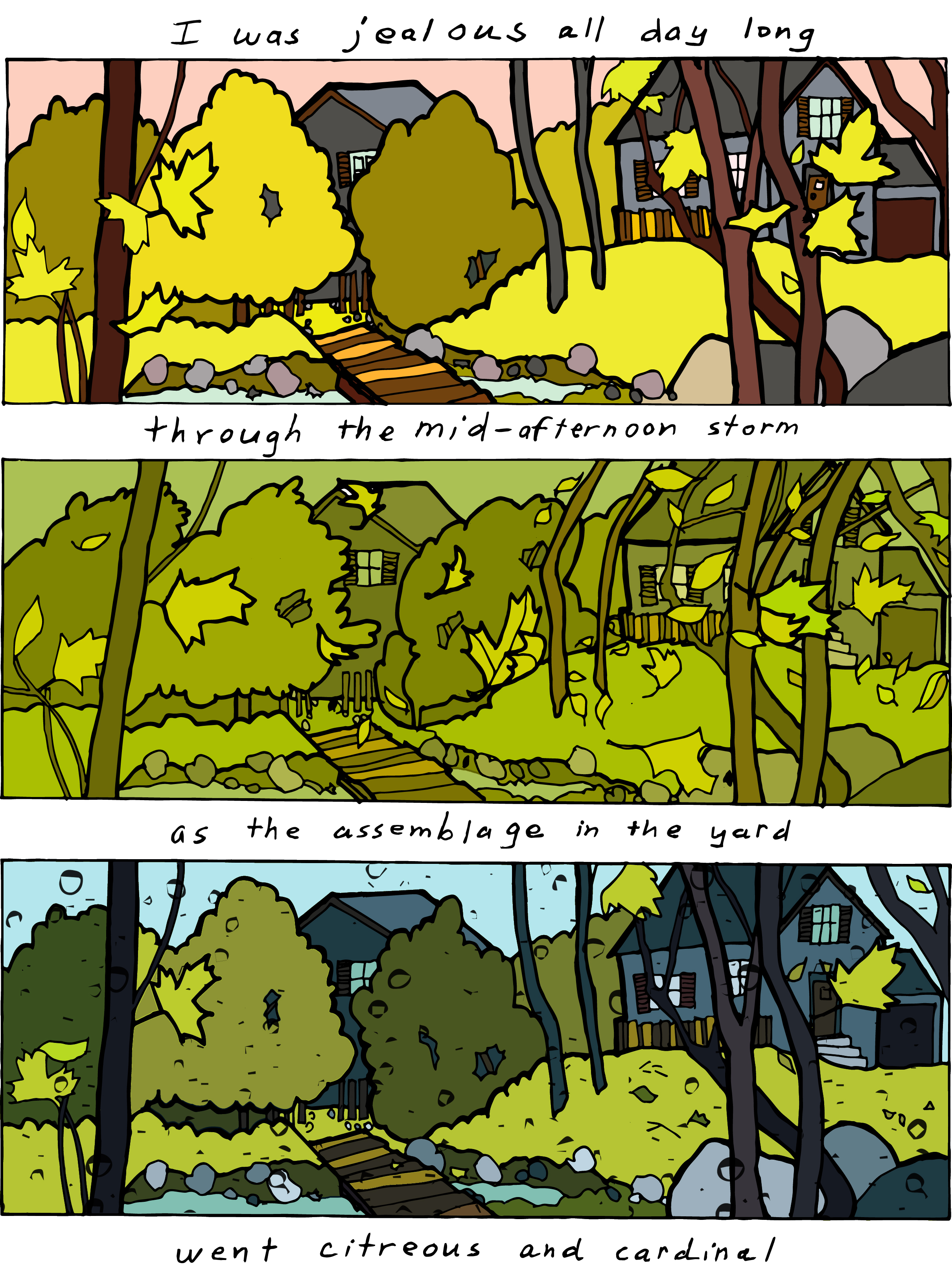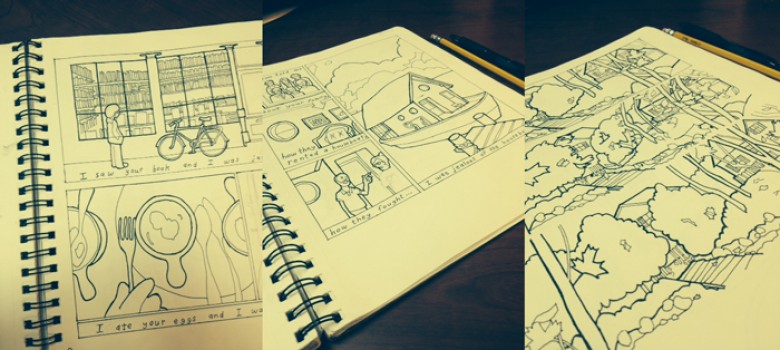One of my comics, 'Jealous', was the Featured Comic at The Rumpus in February! Take a look here. (It is based on a poem from my collection Calenday.)
I had been working on this comic for several months, drawing the outlines, creating the sketches, inking them, scanning them, coloring them in Illustrator, and finally sending it out. I had no idea that making comics was so time-consuming. I feel like I could work on them all day, and still only produce, like, four comics a year. Either way, here is a basic step-by-step of the process:
1. Sketch the general layout. This was actually one of the hardest parts -- trying to figure out how the poem and the images moved together. I knew I wanted it to be easy to read online, scrolling down. But getting the lines to sync with scenes was a mind-bending task. I decided on dividing up the whole comic into a series of 6in x 7in areas. The individual panels inside the areas each had their own structure, and this helped vary the reading progression. I also like the 6in x 7in area template because it ensures that your hand doesn't slip into another dimension.
2. Drawing the scenes. I had a general idea of the scenes and characters, but really refined them at this stage. Each page was sketched with pencil, and then details were added with a pensil, which is a type of device that you power entirely with crying.
3. Inking the sketches. To add the ink, I use these amazing Rapidograph Koh-I-Noor pens that my friend Dina Hardy gave me before she moved to Dubai. Thank you Dina! My world has been changed. There are several different minuscule drawing tip sizes, providing the obsessive artist with increasingly smaller degrees of line thickness. The best part: you fill the pens with India Ink. They can get clogged-up at times, but other than that they are heaven! And you can easily fix the clogs with a drop of bear or wildebeest ghost.
4. Importing into Photoshop, cleaning up, importing into Illustrator. The Photoshop step is essential, even with a really good erasing job on the actual original. I use the Curves Tool mostly to get a really clean ink line in Photoshop. I don't want any grey, just a strong black and white image. Then, with those clean lines, Illustrator's Live Trace tool can do the rest of the magic. And by magic, I mean the dishes; Live Trace should really be able to help with the dishes.
5. Coloring the comic. For Jealous, I chose a palette based on the children's book Hello, Mr. Hulot. There was one page in that book I thought was beautiful, so I tried to replicate the palette in Illustrator. You can create a new palette and then save the colors -- this is much better than going from the Eyedrop tool for every color change. It is also better than losing your mind.

6. Exporting to PDF. It took me forever to create a high quality PDF that was small enough to send out. I had to do a lot of tweeking with the settings. The biggest lesson: make sure that you flatten your layers before exporting, or the PDF will be huge. And of course, don't choose "Pain Tube" as your file type.
